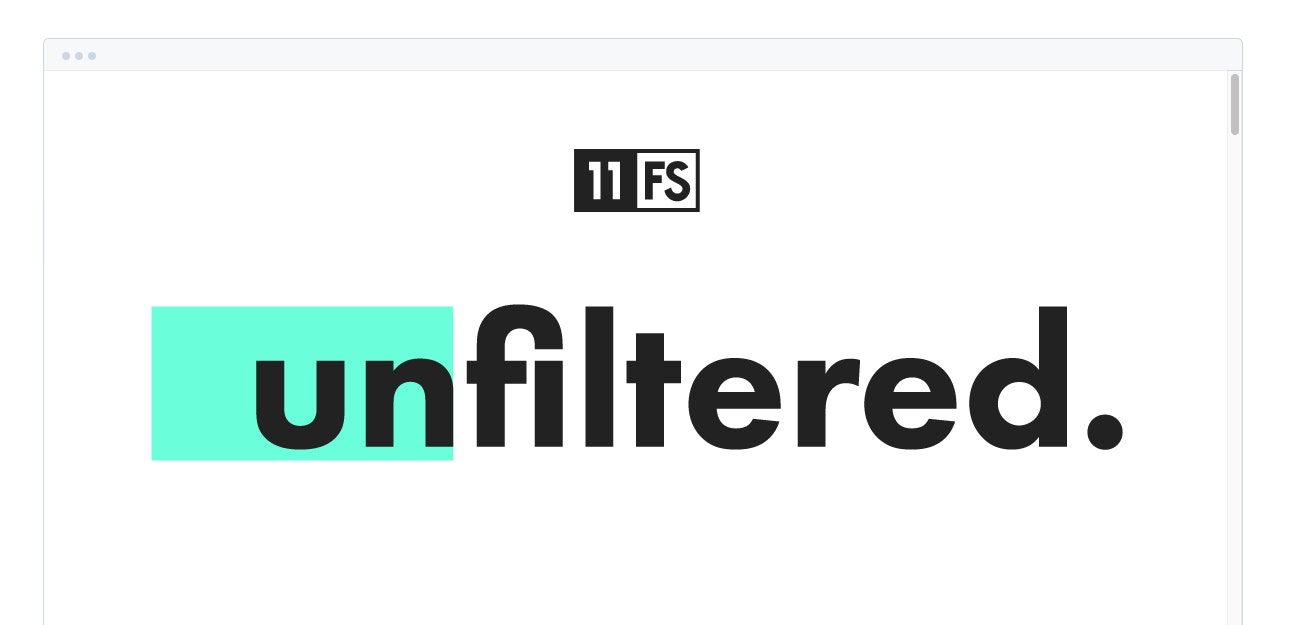Replicating empathy online
How to create digital experiences that feel more human - and why it's critical | Issue № 15
This week / What’s new? | Why does it matter? | What’s next? | What else? | Quotable | One more thing
This week
Read on to learn why:
① UBS is trying to replicate empathy online.
② Brands must do more than rely on Zoom calls to replace in-person interactions.
③ How a client feels is the key consideration in designing online experiences.
④ Independent and conviction based investment advisers appeal now more than ever.
⑤ Financial innovation in the States is hampered by entrenched incumbents.
⑥ Social media are slowly depending less on advertising and more on commerce.
⑦ It's a mistake to target digital products and services purely at millennials.
This week / What’s new? / Why does it matter? | What’s next? | What else? | Quotable | One more thing
What’s new?
A piece about how UBS is trying to replicate in-person empathy online caught my eye.

In short:
“UBS is expanding a pandemic-spurred pilot it hopes will entice more wealthy clients to put their money into mandates. To do so, it is trying to replicate in-person empathy online.”
“The bank has shifted $2.65 billion onto the new platform called Myway - which allows clients to feel as if they are customising their own portfolio out of 50 building blocks, together with their banker.
“UBS had assumed a younger, tech-familiar high net worth type of client would be the most interested, but it’s seeing pick-up from a rich diversity across different age groups, genders, and backgrounds’ including ultra-high new worth clients.” [This is no surprise to April Rudin, see Quotable below.]
This week | What’s new? / Why does it matter? / What’s next? | What else? | Quotable | One more thing
Why does it matter?
The article is frustratingly short on detail about how UBS is going to replicate empathy online. This is critical to any business trying to position itself for success in a post-Covid future because it’s now clear that - even as the world slowly starts to return to the office - we can no longer rely on seeing clients regularly in person or wooing prospects at marquee events.
② As we turn our attention to what the ‘new normal’ is going to look like, we have to assume that online experiences will play an ever important part. Simply replacing client meetings with Zoom calls and events with BrightTALK conferences won’t be enough to differentiate your brand.
The answer is to substitute - at least in part - those interactions with delightful online experiences. But doing so in a way that engages, that feels ‘human’, is no mean feat. As Aite Group's Alois Pirker points out in the article, there is a delicacy to replicating an advisory service online: “getting empathy through a website is really hard – getting that right is no trivial thing.”
This week | What’s new? | Why does it matter? / What’s next? / What else? | Quotable | One more thing
What’s next?
Take action
It’s a tired cliché but it’s also true: every business - and every team across that business - should be client-centric. And within your organisation, it’s your Marketing team that should be closest to your clients and therefore their loudest voice when it comes to designing online experiences for them - whether that be marketing activities, onboarding or client reporting.
As I wrote back in November when we discussed the many interactions that make up your brand: “Your head of marketing should be responsible for - or, at the very least, consulted about - every single client touchpoint. Use your marketing team's client knowledge and sensibilities to ensure that the user experience is consistent with everything your brand has been until then, that it's easy and feels like it was designed by humans who want to help.”
③ In marketing terms, empathy (defined in the dictionary as understanding and sharing the feelings of another) is about putting clients first, thinking always about how they would like to feel, not what you want to convey to them. So, when designing online experiences:
Talk about your clients’ problems, not your solutions: Excruciating though it may be for your head of sales to hear, no client ever woke up wanting to buy some investment management. But many have been kept up at night worrying about the tax implications of leaving money to their kids, the environmental impact of choosing one fund over another, or why women find it harder to fund their start-ups than their male counterparts. Help your clients with their problems and they’ll be happy to pay for your solutions.
Attract, don’t broadcast: Design your online experiences so that clients will want to find them. If you’re tackling issues that matter to them, there is rarely any need to pay to broadcast and indeed it can be counterproductive. Be the treasure they want to uncover, not the irritant that distracts them on their way.
Show, don’t tell: It’s inherent to the psyche, people don’t like to be told what to think, they’re wired to make their own judgements based on what they experience. So, be sure to demonstrate your expertise, your investment performance, the benefits of your approach - don’t just claim to have them.
Personalise, don’t generalise: It’s now relatively easy to tailor an experience according to your user’s preferences. If you know, for example, that someone is a private client living overseas, ensure that your website or app showcases the content and solutions that apply to them when they visit, don’t overwhelm them with institutional solutions that will never apply to them (impressive though you may think it is that you’re capable of offering them.)
Track behaviour, not hits: It’s tempting to count how many visits your website has or how many times you app has been downloaded. It’s also meaningless. What matters is how your users are reacting to the experience. Do they linger? Do they delve deeper? If they’re put off, why is that? Are they struggling to find content that engages them? Only by tracking behaviour can you hope to infuse empathy into your online offering.
Get help
I’m currently looking for a full-time, in-house role but in the post-Covid age of depleted marketing budgets and remote teams with skills gaps, many organisations need marketing and communications support that’s agile, flexible, and risk free. That’s why I founded WhatsNext Partners.
Whether it be as a permanent member of your team or with 'on demand' support, let me know if you need my help.
Share with your network
If you found this post useful or know someone who would, please like, comment on, or share it using the buttons below.
This week | What’s new? | Why does it matter? | What’s next? / What else? / Quotable | One more thing
What else?
Three other articles that are worthy of your time.
FINANCE
Morningstar unleashes robots to write fund research
④ Smaller, independent, and conviction based investment management looks more appealing than ever.
“Robots are being let loose to write investment reports for Morningstar, the research house that helps investors choose among thousands of mutual and exchange traded funds for saving and retirement.”
“The machine-generated reports that began rolling out this week set out the rationale behind Morningstar’s so-called analyst rating on a fund, which run through gold, silver and bronze to neutral or negative.”
“Morningstar has spent the past 18 months working on the machine writing process and Lee Davidson, head of manager research and quantitative research at Morningstar said ‘we will need to keep improving them’, incorporating suggestions from asset managers and investors. The machine-written analysis will automatically update each month.”
TECHNOLOGY
Fintech comes to America at last
⑤ Financial innovation in the States is hampered by entrenched incumbents.

“America has long seemed in the dark ages on digital payments. Until 2018 card purchases required hand signatures, 15 years after Europe switched to chip-and-pin. The good news is that the picture is changing for the better. Thanks to the pandemic, there has been a surge in payments online and experimentation by consumers with new services provided by digital-payments firms.”
“Despite this, fees for consumers have yet to fall by much. Square charges 2.6% on the average transaction; Stripe’s fee nears 3%. By contrast, China’s big fintech firms charge below 0.5%. Fees have been kept low by a fierce price war. A big part of the problem in America is that, rather than route purchases through competing payment pipes, the fintechs still often have little choice but to rely on America’s credit-card networks to connect merchants, banks and consumers.”
“The key to making payments more competitive in America is to create a new network of financial plumbing: a ‘real-time’ interbank-payment system allowing for near-instant and cheap transfers. Swathes of Europe and Asia have already done this. Once this exists, banks and fintechs can build products, standards and services on top of it.”
MEDIA & MARKETING
Stripe’s $95bn price tag heralds internet shift from ads to commerce
⑥ Social media are slowly depending less on advertising and more on commerce.
“The legacy of the web’s missing payments layer has been the dominance of advertising as a business model for online services such as Google and Facebook. But the pull towards payments and commerce is simple: it is a far, far bigger market than advertising.”
“Global advertising spending fell around 4 per cent to $569bn last year. Digital platforms have fared better than traditional media, of course, climbing 8 per cent while offline ad sales tanked 21 per cent. At nearly $5tn, the ecommerce market is already several times larger than the entire advertising business. While the margins may be thinner, worldwide ecommerce sales rose by 28 per cent last year and now make up 18 per cent of the total retail market.”
“It will take many more years for payments and commerce to displace ads as the default form of monetisation for internet companies like Facebook and Twitter. But the infrastructure is slowly falling into place.”
This week | What’s new? | Why does it matter? | What’s next? | What else? / Quotable / One more thing
Quotable
⑦ April Rudin, Founder and CEO at The Rudin Group, on the adoption of technology amongst wealth management clients:
“Year after year, [Capgemini's World Wealth Report] produces statistics saying that the highest digital adoption is really among ultra-high-net-worth baby boomers.”
This week | What’s new? | Why does it matter? | What’s next? | What else?| Quotable / One more thing
One more thing…
11:FS’s marketing director, Mariette Ferreira, wrote a great piece this week arguing that if your marketing is better than your product, you’re doing it wrong. I agree and made a similar point a couple of weeks ago in connection with Greensill’s downfall.

“Products with marketing (and therefore brand) integrated at the start can demonstrate a level of authenticity that wouldn’t be possible if marketing was simply a sticker slapped on at the end of the production line.”
“One of the marketing OGs, Peter Drucker, said ‘the aim of marketing is to know and understand the customer so well the product or service fits him and sells itself. The aim of marketing is to make selling superfluous’.”
“Successful businesses know that great marketing starts at the inception of a great product.”





